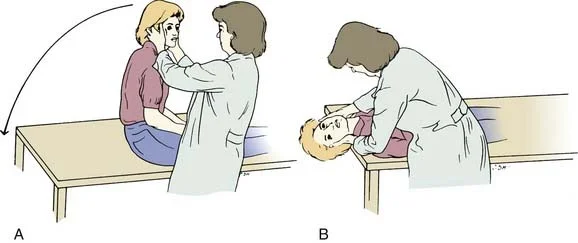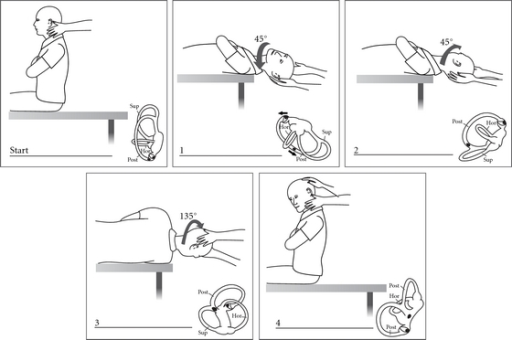Author: Bryan Lang, PT, DPT, MHA, CSCS, Cert.DN: Doctor of Physical Therapy, Business Owner, Associate Professor, and Blog Contributor. Explores common client questions, helps find solutions for every day functional health concerns, and interprets difficult theories in healthcare rehabilitation. Committed to life-long learning and education. Learn more about Bryan on Google+.
Sometimes articles sound too good to be true, but in this case, the treatment that physical therapists perform to fix dizziness related to a vestibular disorder called Benign Paroxysmal Positional Vertigo (BPPV) can work almost instantly. There are many reasons why people can have bouts of dizziness, but if it’s because of the vestibular imbalance BPPV, physical therapy can treat it in 1-2 visits.
In order to determine if there is a problem with your vestibular system, a physical therapist will perform a Dix-Hallpike maneuver. The test is positive when you see the client’s eyes start rotating (this is called nystagmus on medical terms) and the client will also complain of dizziness during the procedure.
To complete the test, the patient is brought back to the seated position, and the eyes are examined again to see if reversal occurs. The nystagmus may come in paroxysms and may be delayed by several seconds after the maneuver is performed. Below is a picture of the dix hallpike test.
If the Dix-Hallpike test is positive, the physical therapist will immediate treat it with the Epley Maneuver. Below is a picture showing the steps of the Epley Maneuver. Many times, just doing this once can fix dizziness associated with the vestibular system.
So why does the Eply Maneuver work so well? This part gets very interesting and technical, but if you want to know, I’ll share it with you. Your vestibular system helps you with balance and spatial awareness. Basically, the reason why you know up is up, down is down, and can turn your head left and right without falling down has a lot to do with your vestibular system, There are three circles in your inner ear that work together to keep you upright (see below). There are free-floating particles inside the circles that sometimes become logged in one of those same circles of your inner ear. I remember when I first learned this in physical therapy, I thought it was absolutely crazy. However, it really is true. When the particles become lodged, it throws off your ability to balance, and hence you start to become dizzy. The Epley Maneuver helps to push the “stuck” particles away from an area called the capula, which is responsible spatial orientation. The treatment uses gravity to relocated the floating particles back into the utricle, where they should be.
There are other vestibular disorders that can impair balance and affect dizziness, but BPPV is extremely curable with an Eply Treatment.
Medical Terminology review
The cupula is a structure in the vestibular system, providing the sense of spatial orientation.
The semicircular canals or semicircular ducts are three semicircular, interconnected tubes located inside each ear. The three canals are:
the horizontal semicircular canal (also known as the lateral semicircular canal),
superior semicircular canal (also known as the anterior semicircular canal),
and the posterior semicircular canal (also known as the inferior semicircular canal).
The vestibular system, in most mammals, is the sensory system that provides the leading contribution about the sense of balance and spatial orientation for the purpose of coordinating movement with balance. Together with the cochlea, a part of the auditory system, it constitutes the labyrinth of the inner ear in most mammals, situated in the vestibulum in the inner ear
The utricle, or utriculus (Latin: utriculus, diminutive of uter, meaning "leather bag"), along with the saccule, is one of the two otolith organs located in the vertebrate inner ear. The utricle and the saccule are parts of the balancing apparatus (membranous labyrinth) located within the vestibule of the bony labyrinth (small oval chamber).[1]
Latency of onset (usually 5–10 seconds)
Torsional (rotational) nystagmus. If no torsional nystagmus occurs but there is upbeating or downbeating nystagmus, a central nervous system (CNS) dysfunction is indicated.
Upbeating or downbeating nystagmus. Upbeating nystagmus indicates that the vertigo is present in the posterior semicircular canal of the tested (lower ear) side. Downbeating nystagmus indicates that the vertigo is in the anterior semicircular canal of the contralateral (upper ear) side.
Fatigable nystagmus. Multiple repetition of the test will result in less and less nystagmus.
Reversal. Upon sitting after a positive maneuver the direction of nystagmus should reverse for a brief period of time.





